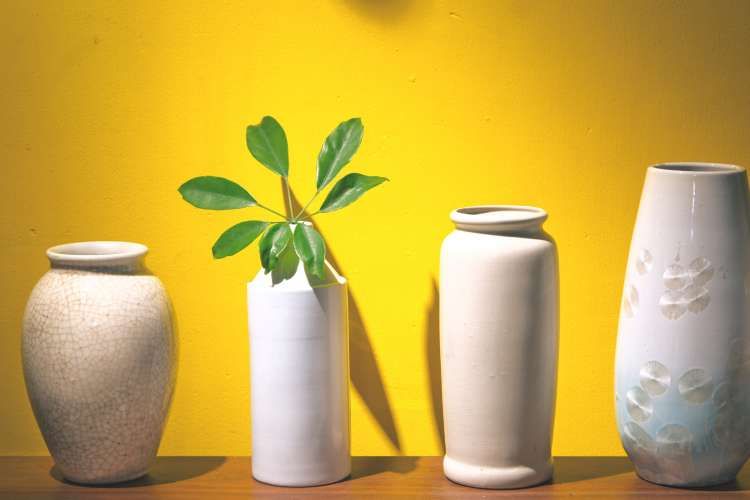Why Are Clay Pots So Good?
Clay pots have been used for thousands of years across numerous cultures for cooking, storing food and water, and general home use. Made from natural clay and fired at high temperatures, these durable, porous vessels provide a variety of benefits. Clay pots excel at even heating, moisture control, and keeping foods fresh without refrigeration compared to other materials. Beyond their practical uses, clay pots add rustic beauty and a handmade touch to any home. This article will explore the history and many advantages of using clay pots.
Durability
Clay pots are extremely durable and can last for generations if cared for properly. The clay material is fired at high temperatures, making it very strong and resistant to weathering over time. According to a Reddit thread, clay pots can last for generations if not dropped or mishandled. The durability comes from the dense, ceramic material that makes up the clay pot. Once fired and formed, these pots maintain their shape and structural integrity for many, many years. This durability and longevity is a key advantage of clay pots over plastic pots, which degrade over time and need to be replaced frequently.
Thermal Properties
Clay has excellent thermal properties that help regulate temperatures. The porous material has a low thermal conductivity, which means heat travels through clay slowly. This allows clay pots and containers to moderate temperature changes. According to research from IJERT, clay has a specific heat capacity over 3 times that of metals like iron and copper. 1 This high heat capacity allows clay to absorb and retain more heat energy.
As a result, clay pots keep contents cooler in summer and warmer in winter. The evaporative cooling effect also helps chill clay containers in hot weather. As moisture evaporates through the porous clay walls, it pulls heat away from the contents inside. This refrigeration effect can cool water in a clay pot by several degrees compared to the surrounding temperature. 2 In winter, the clay insulates against heat loss. So clay’s excellent thermal properties provide natural heating and cooling effects.
Moisture Control
One of the key benefits of clay pots is their ability to control moisture levels for plants. Clay is porous and allows excess water to evaporate through tiny pores in the material. At the same time, the clay holds onto enough moisture to keep plant roots hydrated. This moisture control prevents issues like root rot due to overwatering. With a clay pot, any excess liquid dissipates through evaporation rather than saturating the soil.
The porosity and breathability of clay makes it superior to materials like plastic or ceramic for plant pots. Plastic traps moisture and does not allow evaporation, while ceramic is impermeable to water. With clay, the evaporation process provides airflow to the plant roots as well. This aeration is healthy for the plant and mimics natural conditions in the ground. The moisture control abilities of clay pots make them an ideal choice for a wide variety of plants and gardening applications.
Aesthetics
Clay pots have a beautiful natural rustic aesthetic that pairs well with many decor styles. The earthy terra cotta or red clay color provides a warm, organic look in any indoor or outdoor space. Clay pots have an artisanal handmade appearance, with slight variations that add charm and character. Their imperfections and small cracks give them an antique, weathered look. Unlike metal, glass, or plastic containers, clay pots have a soft, tactile quality. Their natural matte texture creates visual interest and depth. The raw unfinished surface absorbs light differently than polished materials. Clay pots complement both modern minimalist environments and traditional rustic decor. They provide a pleasant pop of color against greenery. Their natural materials seamlessly blend with stones, wood, and other earthy accents. Overall, the aesthetic beauty of clay pots derives from their organic roots and handcrafted origins.
(Cited from https://www.urbanmali.com/blogs/wisdom/easy-maintenance-big-benefits-why-clay-pots-are-a-great-choice-for-your-plants)
Sustainability
One of the best qualities of clay pots is that they are natural and sustainable. Clay is an earth material that requires little processing to be shaped into a pot, meaning clay pot production has low environmental impact compared to other materials like plastics or metals. Clay pots can also be reused, recycled and are fully biodegradable at the end of their lifecycle 1. This is very different from other cookware materials that end up in landfills.
After the clay is harvested, it only needs to be molded and fired to create the finished pot. The firing process does not require high heat or chemical treatments. And because clay is an abundant natural material, sourcing it is much more sustainable than mining metals or drilling for petrochemicals used in plastics. So clay pots have a small carbon footprint from start to finish.
Clay pots don’t have to be discarded when their useful life is over either. Chipped or cracked clay pots can be crushed up and recycled back into usable clay again. At the end of their lifespan, clay pots will fully degrade back into the earth unlike other cookware that leaves behind non-biodegradable waste.
For environmentally-conscious cooks, the sustainability and natural qualities of clay pots make them an excellent eco-friendly option.
Affordability
Clay pots are very affordable compared to pots made from other materials like plastic, concrete, or metal. Basic terra cotta clay pots can be purchased for as little as $1-5 depending on the size, while more ornate or artisan-made pots may cost $20-100. But in general, clay pots offer an extremely budget-friendly option for plant and flower containers (Most Asked Questions In Clay Pots For Cooking: Answered!). Their low cost makes clay pots very accessible for home gardeners, schools, community gardens, and anyone else looking for an inexpensive way to grow plants.
Availability
Clay pots are produced globally and available in most markets worldwide due to the widespread access to clay materials and relatively simple production process. Raw clay and terracotta clay are widely available across the world, making clay pots easy to manufacture locally. This allows almost all markets to have access to locally produced clay pots (Greencore Plants). The raw materials and production process are so ubiquitous that clay pots can be purchased cheaply even in remote areas or developing regions. With global connectivity, imported and specialty clay pots are accessible through online stores and marketplaces to most consumers worldwide (Houzz). Overall, the availability and affordability of clay pots on a global scale is a key factor in their continued widespread use and popularity.
Versatility
Clay pots come in a vast range of shapes, sizes and styles to suit nearly any purpose. Their versatility stems from clay’s malleable yet sturdy nature, allowing artisans to craft pots in myriads of forms. From small ramekins for baking to enormous amphorae for storing olive oil and wine, clay vessels have served people for millennia.
In Ancient Greece and Rome, pottery was an essential part of daily living. Clay pots stored and transported water and foods like wine, olive oil, cereals, olives, spices and more. Distinct pot shapes were designed for specific functions – tall amphorae for liquids, wide bowls for serving, narrow jugs for pouring, and lidded pots for storage (Source).

Today, unfired clay pots keep perishable foods cool by evaporation in arid regions lacking refrigeration. Their porous nature allows ventilation while containing roots, making clay excellent for planting containers. Unglazed terra cotta readily absorbs water, helping prevent root rot. Clay pot cooking infuses food with earthy flavors and even allows baking bread or cooking stews in a simple fire. With endless forms suiting any need, clay pots demonstrate unrivaled versatility across millennia.
Conclusion
In summary, clay pots remain popular through the ages due to their many benefits. Clay is an extremely durable material that resists cracking and damage, allowing clay cookware to last for generations. The porous nature of clay also provides superior moisture control during cooking, helping retain steam and evenly distribute heat. This makes clay pots excellent for slow cooking techniques that tenderize meats and bring out flavors. The natural aesthetics of handmade clay pots add rustic beauty to any kitchen or dining table. From an environmental perspective, clay is sustainable, reusable, and compostable at end of life. Finally, the affordability and wide availability of clay pots have cemented their place as a staple cooking vessel in cultures across the world. While metal and glass vessels have grown in popularity, clay’s unique durability, thermal properties, moisture control, aesthetics, sustainability, affordability, and availability ensure it remains a popular choice to this day.


